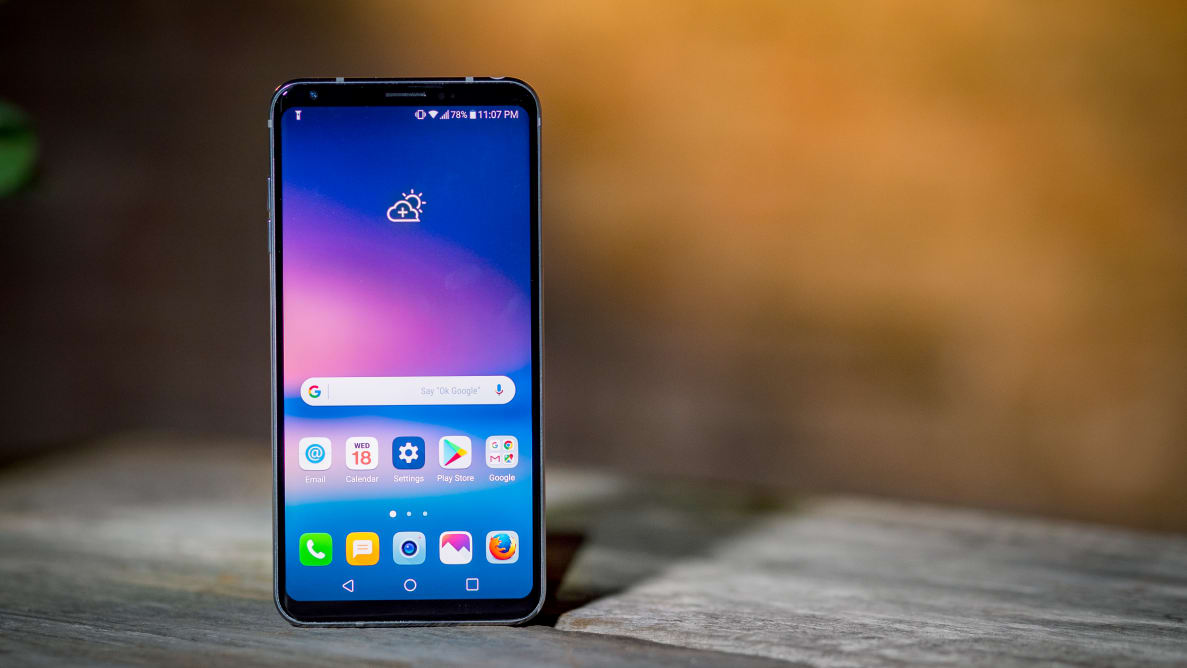Pros
Cons
But with the new LG V30, the company seems to almost be playing it safe. Though a few attention-grabbing features remain, there isn't some unheard-of design that separates it from the pack. It still has a headphone jack—thank heavens—but otherwise, you could swap the logo on it and convince me it's from Samsung, Apple, HTC, or any of the major Chinese phone makers.
That said, I firmly believe this is the best phone LG has ever made. Though it's missing some of the try-anything spirit of previous LG phones, this is still an incredible phone.. It's fast, responsive, extremely easy to hold despite the giant screen, and it doesn't ask you to give up something as critical as a headphone jack—in fact, LG has included souped up hardware to make your headphones sound even better.
Add it up and the V30 is easily one of the best on the market. Longstanding LG fans may miss some of the charm of its predecessors, but if you just want a phenomenal phone, LG has you covered.
About the LG V30
The LG V30 is the company's flagship phone for 2017, following up on the successful (if a bit off-beat) V20. Here are the specs according to LG:
Processor:Qualcomm Snapdragon 835 Display:6-inch, 1440x2880 pOLED Memory: 4GB RAM Storage: 64GB base, 256GB optional, microSD Camera: Dual 16-megapixel f/1.6 rear cameras, 13-megapixel f/1.9 front Features: 3-axis OIS, phase-detect AF, HDR, 4K/30p, 1080/30p, Quad DAC audio Battery: 3300mAh non-removable battery Dimensions: 151.7mm x 75.4mm x 7.4mm Weight: 158g
The base model of the V30 comes with 64GB of internal storage and a microSD slot. It is retailing for around $800 in the US unlocked, but may be different in other territories. You can pay more to upgrade to 256GB of internal storage in the US, but we'd encourage most people to go with the base model and purchase a microSD card instead. International versions may also be dual SIM, but our AT&T test unit only uses a single SIM.
What We Like
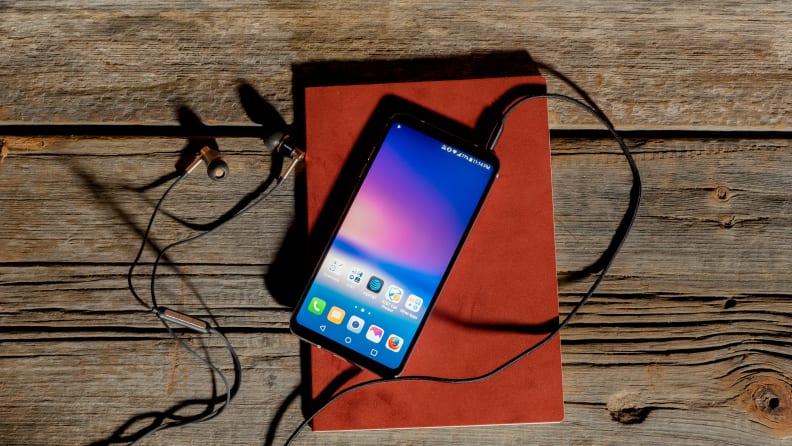
The LG V30 is an excellent argument for keeping the headphone jack—and it has removable storage to boot.
A triumphant defense of the headphone jack
Look, I could write endlessly about how dumb it is to get rid of the headphone jack on smartphones. There's simply no way to justify how awful it is to sit in an airplane, grab your headphones, and realize you forgot the dongle to connect them—or worse, you have a dongle, but not the right one. Dongle, dongle everywhere, but not a cable I can link.
There's no such dilemma with the LG V30. It has a headphone jack, powered by LG's fantastic Quad DAC. That means not only do all of your headphones work just fine, but they actually sound much better. You can even turn the Hi-Fi DAC on and off in the options so you can hear the difference for yourself. You get more bass, more oomph to your music, and better separation between elements.
In my experience the effect is most pronounced with high-quality headphones (since they're typically held back when hooked up to a standard smart phone), but even basic earbuds will benefit. It's awesome.
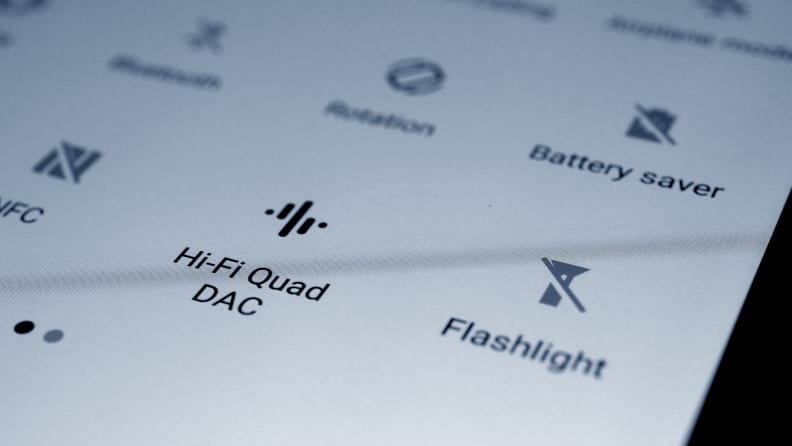
The LG V30's Quad DAC soups up your headphones, making them sound better than ever.
The display is huge, bright, and fills the front of the phone
I used the V30 for a few days as my daily driver before starting this review, and when I saw that it had a 6-inch display on the spec sheet, I was convinced the spec sheet was wrong. It's a big screen, to be sure, but the phone isn't big. Most phones over 5.5 inches are tricky to keep hold of or use with one hand. The V30 feels closer to a 5- or 5.2-inch phone.
The reason for this is LG has managed to squeeze in a large OLED display that nearly runs from edge to edge. That means it's much taller than the phone you're probably using now (the aspect ratio is an ultrawide 18:10), and the phone isn't significantly wider than what you're probably used to. The extra screen doesn't help much when watching 16:10 videos, and some apps don't scale perfectly, but for things like browsing the web, messaging, and snapping photos, it's great.
In our tests, the display performed excellently. It offers pitch-black black levels that didn't even register above 0.0000 when using our equipment, thanks to OLED's ability to totally shut off pixels. It also got sufficiently bright to be used even outdoors in bright sunshine, with a peak brightness over 450 nits. There are some minor issues that we'll go into in the "What We Don't Like" section, but they're not dealbreakers.

Shot on the LG V30 and edited in Lightroom Mobile.
The camera is extremely good, if not a cut above the pack
Cameras in smartphones are getting incredible, and the LG V30 is no exception. In our tests it offered just under 11 stops of dynamic range when shooting in RAW, on par with a DSLR from a couple of years ago. It's about a half stop behind the iPhone 8 Plus and the Samsung Galaxy Note 8, but it's not a difference you're going to notice too often.
In low light—the most challenging environment for a smartphone—you generally will find images come out a bit dark, though they're typically quite sharp. This is due in part to LG's intelligent switching of autofocus modes, but it also has to do with how LG processes the images. In our test shots I generally found LG sharpened up fine details considerably, though this filter often also sharpens up artifacts left over from the noise reduction, so some areas that should be smooth come out splotchy.

Shot on the LG V30 and edited in Lightroom Mobile.
In use, I was particularly impressed by how well the camera handled focus in tough lighting situations. The stock camera app is fast, accurate, and offers tons of features for beginners and experts alike. If you want a little more control you can shift it into a "Professional" mode, though I prefer to shoot in Adobe Lightroom Mobile, which offers all the editing tools I'm used to right on the phone.
The video modes were also excellent, though the 4K video tops out at 30FPS. All in all, it's an exceptional smartphone camera, for stills and video.

Shot on the LG V30 and edited in Lightroom Mobile.
The battery life is stellar
Though the LG V30 didn't set new records in our battery life test, it more than held its own. With reasonable brightness (200 nits, or about 73%) in the Geeknbench 3 battery benchmark it ran for over 10 1/2 hours before giving out.
I also used the V30 as my daily driver for a few weeks, and even though I keep the screen around 100% and use it constantly, I always had at least 10% left. I'm on my phone all day for work (from about 8 a.m. until 1 a.m.), so that's exceptional—even if the battery isn't replaceable like it was on older LG phones.
What We Don't Like
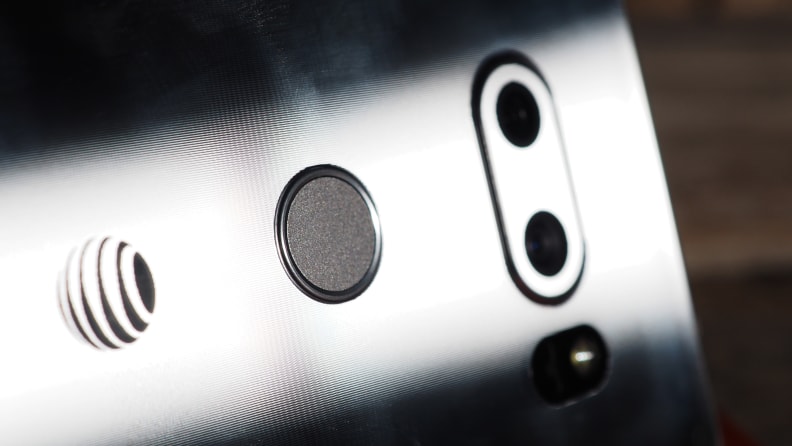
The LG V30's fingerprint sensor/home button is rear-mounted, meaning you need to reach behind the phone to unlock it.
The wide-angle camera just isn't that useful
I'm a big proponent of dual-lens cameras. The digital image processors in phones are powerful enough to handle quickly switching from one camera to another and the camera modules themselves aren't that expensive, so why not? I'm particularly smitten with having a second camera that offers a bit of zoom, as I usually find smartphone cameras to be a bit too wide for my tastes.
Unfortunately, the LG V30 offers a second camera that is even wider than the main camera. Instead of letting you get closer to the action it helps you fit more in the frame. That's useful sometimes for architecture, or group shots, or shots where you want to point the camera down and can't get to a higher point, but I find a telephoto sensor to be more useful more often.
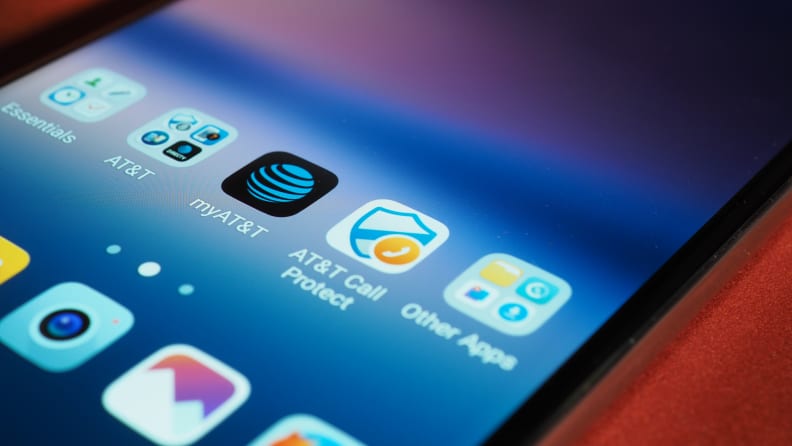
The LG V30 from AT&T comes with a significant number of bloatware apps and services you won't want.
The display has some minor issues in low light
The LG V30 caught some flak in tech enthusiast circles because of some photos that showed some serious-looking issues with screen uniformity in low light. Basically, in a dark room with the brightness down low the screen would have very obvious banding, a checkerboard-like pattern, and parts of the screen remained way brighter than others.
The blame was instantly cast on LG's use of a pOLED, which uses a plastic substrate (versus a glass one in some other phones). Samsung's AMOLED displays were the obvious point of comparison, and they don't have these same issues. Except, Samsung's phones also use a plastic substrate. Samsung has been making OLED phone screens at a much higher rate and for longer than LG, so there's some extra expertise on their part, but the gap shouldn't be that large.
I have two different LG V30 units (a pre-production version and a retail AT&T model) and neither have issues as egregious as those posted online. There is some minor roughness and spotlighting visible if you really search for it. Here's what our V30 units look like alongside the Galaxy S8, Note 8, S7, iPhone 8 Plus (which uses an LCD), and the original Pixel (also an LCD):
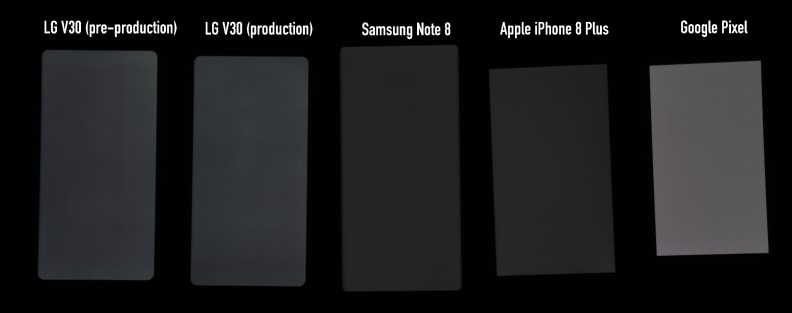
In this extreme example, you can see some uniformity issues on the LG V30, but they're nothing you should worry about.
The V30 has some minor uniformity issues, but I used the V30 for a full week before learning about this and didn't notice anything on my own. I really don't think it's anything to freak out over. It's possible we received curated units and the problem will be more widespread in the real world, but if you put the brightness to 0% and sit in a dark room, you should be able to find if your particular model has an issue so you can return it if need be.
Should You Buy It?
Yes—if you want a big phone with few sacrifices
Shockingly, buying a phone in 2017 seems to be more about what you're willing to give up than what you're willing to pay for. Want a giant state-of-the-art screen? Prepare to live with an ugly notch in the middle of it. Want the latest iPhone? Sorry, no headphone jacks. Want the top-performing Samsung phones? Hope you don't mind smudging your camera every time you want to use the fingerprint sensor.
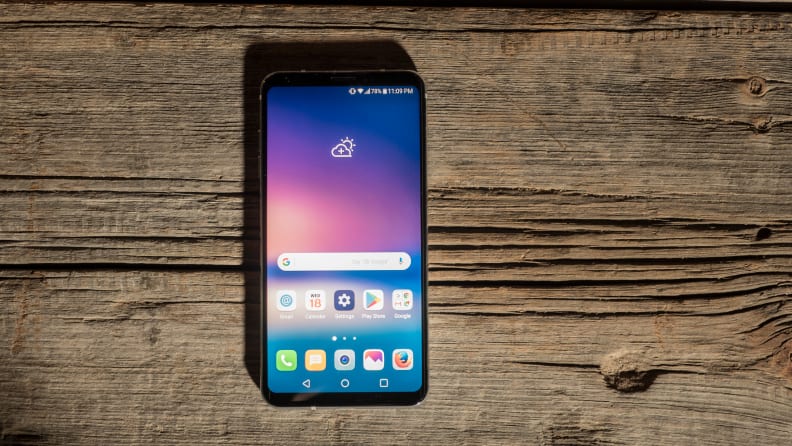
The LG V30 is a beautiful phone, and the minor imperfections in the screen don't detract from that.
The LG V30 doesn't have any of those issues. It's just a great phone with all the latest guts on par with all the best phones on teh market. There are some design quirks we don't love—the rear-mounted home button/fingerprint sensor will never totally feel right—but it's just a great phone. It even still has expandable storage and a kickass headphone jack–two things that are absent on many other premiere phones.
Now for the bad stuff: The display has some minor issues if you're using it in a pitch black room on minimal brightness, we would much rather have the second camera offer some zoom vs a wide-angle view, and the UI looks like it was designed two years ago.
There's also the $800 price tag. But while you can get some smaller screen phones for under $700 like the iPhone 8 and Pixel 2, if you want a bigger screen these days, you're going to have to pay for it. As such, the 6-inch V30 is similarly priced to other 5.5-inch (and up) phones like the Note 8, iPhone X, iPhone 8 Plus, S8+, and the Pixel 2 XL.
Add it up and this is easily the best phone LG has ever made. It may be "boring" in that it doesn't take any major risks like past LG phones, but I've seen what happens when other smartphone makers make bold, courageous design decisions; we get phones that force you to use dongles, or wireless headphones, or live with some other annoyance every single day. When every other smartphone feels like an exercise in compromise, boring feels like a break.
Meet the tester
TJ is the former Director of Content Development at Reviewed. He is a Massachusetts native and has covered electronics, cameras, TVs, smartphones, parenting, and more for Reviewed. He is from the self-styled "Cranberry Capitol of the World," which is, in fact, a real thing.
Checking our work.
Our team is here to help you buy the best stuff and love what you own. Our writers, editors, and experts obsess over the products we cover to make sure you're confident and satisfied. Have a different opinion about something we recommend? Email us and we'll compare notes.
Shoot us an email